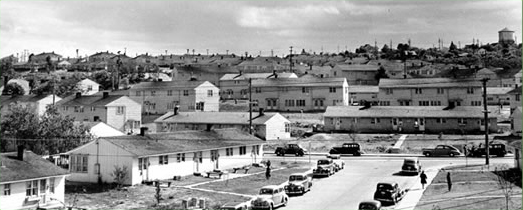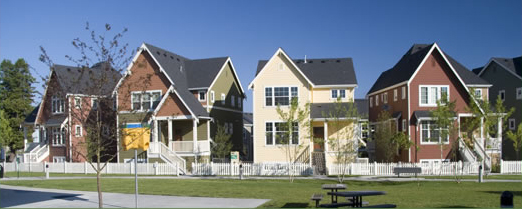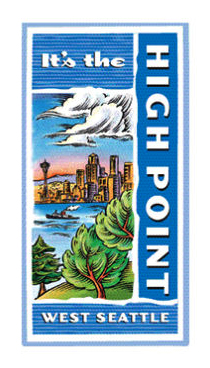THEN & NOW
Built in 1942 to house WWII government workers, High Point was taken over by Seattle Housing Authority (SHA) in 1952 and converted into 1,300 units of affordable housing (This number was reduced to 716 in the late 1970's.)
By the 1990's, High Point was ripe for redevelopment and upgrading. Outdated and run-down buildings, inadequate transit access, and neglected open space plagued the area, which was isolated from greater West Seattle by its street grid.

In 1992, Congress had passed the Homeownership and Opportunity for People Everywhere Act, or "HOPE VI." A three-year federal study begun in 1989 had found much of America's public housing to be "severely distressed" and "unfit, unsafe, unlivable." High Point would soon become an outstanding model of the highest hopes for the improvements this act could fund.
With over $37 million in federal HOPE Vl funds, the SHA—an independent public corporation that functions as both a property manager and a nonprofit developer—began plans to redevelop the entire site into a mixed-income community. SHA noted that decades of public-housing efforts, premised on faulty ideas, had "isolated the poor in concentrated enclaves," calling for a much more progressive ideal. In the late 1990's, the city and SHA formed a working relationship on High Point. In 1999, the mayor proposed a Delridge High Point Neighborhood Revitalization Strategy be included in the City’s block grant program.
By the year 2000, a vision began to emerge of High Point as a mixed-income, multi-ethnic community with new streets, parks, and amenities, knitted more closely into the fabric of West Seattle—with an emphasis on quality, aesthetics, health, and environmental stewardship rarely seen in affordable housing development.
SHA developed a master plan in 2001 for the redevelopment. The city's design commission and the West Seattle Design Review Board conducted joint reviews of the master plan and gave their support.
That master plan determined many of the most important features we enjoy at High Point today, including the eco-friendly street grid and natural drainage/stormwater treatment; safe and beautiful pedestrian and open space connections; efficient, healthy and environmentally sensitive building technology; and the attractive housing that accommodates over 1,500 households across a broad range of income levels.

A city council resolution authorized the SHA High Point proposal and articulated its vision. In 2003, Seattle passed a special ordinance to permit low-impact-development features throughout the redevelopment of High Point, which would expand to include up-to 1600 units, 48 percent of them slated as affordable rentals for low-income families. Nearly 500 units are designated for 40 years to be available to Seattle residents earning no more than 30 percent of Seattle's median income.
Now home to over 4,000 people, High Point's 120 acres is fully 17 percent open space.
A robust, unusually engaged and exemplary community planning process allied residents/neighbors, city government and developers in the process of fleshing out this vision and making it a reality. The intensive collaboration between residents and planners—even involving children!—unleashed an extraordinary cooperative spirit representing the highest potentials of public-private partnership and community-civic involvement.
High Point was developed in two major phases, with buildings being completed from 2003 through 2020.
Today, High Point is nationally recognized as the first dense urban development in the U.S. to achieve large-scale sustainable, low-impact design. With numerous awards for its commitment to environmentally responsible design and healthy living initiatives, as well as to diverse, multi-income community development, High Point is a focal point of study for building and design professionals from all over the world.
